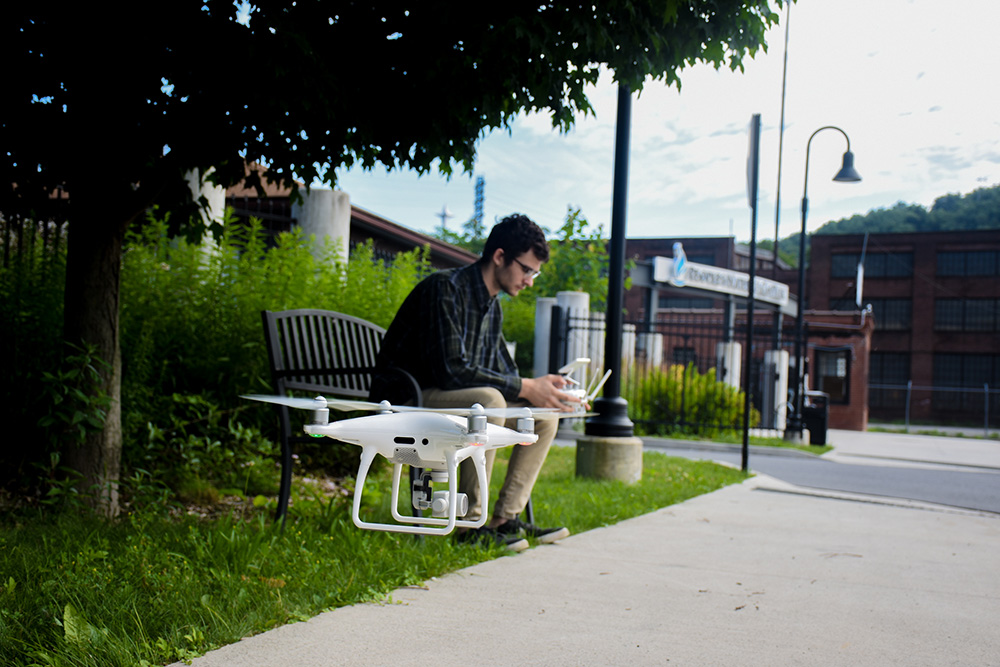Table of contents
Related articles

Small unmanned aircraft systems, or sUAS for short, are surging in popularity across the world. In 2018, the amount of drones registered with the Federal Aviation Administration (FAA) reached over one million, and only 10% of those drones are registered for commercial use.
The FAA requires all individuals flying for work or a business to follow the Part 107 Regulations, which have three main parts. The person must:
- Learn all of the federally mandated rules associated with flying an sUAS
- Register their drone with the FAA
- Pass a written test to become an FAA-certified drone pilot
With the wide array of industries drones can be used in, many of these certified pilots are finding value in offering their services to business. However, with only 122,000 drones certified for commercial use according to the DOT, it is important to ensure that those looking to hire a drone pilot know what to look for. Choosing an uncertified pilot could potentially lead to safety hazards, fines from the FAA, and other headaches that are easily avoidable by choosing the right pilot. Below we are going to discuss the two main things to consider when looking for a certified drone pilot.
 MAKE SURE THEY DID THEIR PAPERWORK
MAKE SURE THEY DID THEIR PAPERWORK
Part 107 Requirements
As mentioned before, the FAA requires all pilots who wish to fly an sUAS for commercial use to obtain certification and training before doing so. This certification is commonly called the FAA Part 107 certification, which comes from the General Operating and Flight Rules under 14 Code of Federal Regulation (CFR) Part 107.
14 CFR Part 107 applies to all small unmanned aircraft systems that are being flown for anything other than recreation or hobby purposes. What this means is that anyone flying for commercial purposes must obey the following rules:
- The aircraft must be registered if weighing over 0.55 lbs (8.8 oz)
- Must fly only in uncontrolled airspace
- Must keep the aircraft in visual line-of-sight
- Must fly under 400 feet AGL
- Must fly during the day
- Must fly at or below 100 mph
- Must yield right of way to manned aircraft
- Must NOT fly over people
- Must NOT operate from a moving vehicle
FAA Authorization & Waivers
It is important to note, sUAS pilots can deviate from the above rules ONLY if they applied for—and were granted—authorization or a waiver from the FAA DroneZone. In this case, one of the most common authorizations sought out by drone pilots is FAA Airspace Authorization.
Airspace authorization is necessary when flying in areas with overlying controlled airspace, which typically exists from nearby airports. If a pilot were to fly near an airport that has class D airspace extending to the area, they will need to have FAA Authorization in order to fly there. Otherwise, it is illegal and the pilot will face a fine, or in some cases lose their certification.
The same rules apply when flying at night, except this time the drone pilot will need to apply for a waiver rather than authorization. Once the waiver has been approved by the FAA, they will be granted permission to fly during the night after following the set rules and procedures.
Insurance
Also, if hiring a commercial pilot, be sure to check if they have liability and medical insurance on their flights. Just like when driving a car, it is unlikely an accident will occur, but it is not worth it to assume that accidents won’t ever happen. It is important to have drone insurance policies in place just in case of a runaway drone or an in-flight mishap. If a pilot is flying without insurance and they cause damage to a person or their property, the liability is 100% on the pilot.
WHAT DOES THEIR PAST WORK SHOW
When hiring a drone pilot, it is important to be sure that the pilot is a good fit for the job they are being hired for. A drone pilot who captures photos and videos will have different skills, equipment, and training than a pilot who performs inspections. Innovative Tomato specializes in aerial photography and videography, where we capture footage on the ground and in the air for our clients’ business and marketing ventures.
If using a drone for creative purposes rather than for inspections or as a tool, the captured images or video will need to go through post processing. Taking the aerial photography or footage for the project is only one step of the creative process. Getting to the final product will require multiple stages of post processing that the Innovative Tomato crew does to every project in order to make it perfect.
 MAKE SURE THEY DID THEIR PAPERWORK
MAKE SURE THEY DID THEIR PAPERWORK
